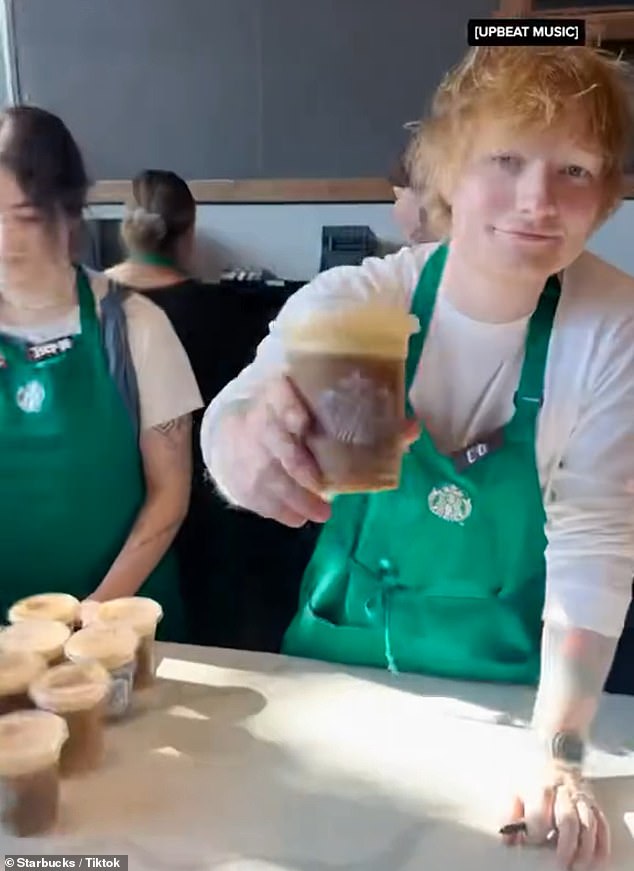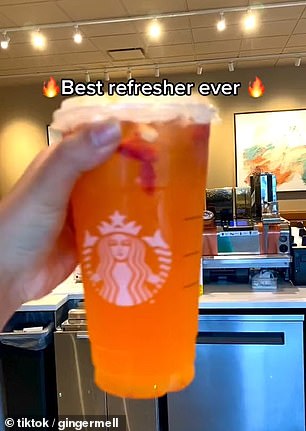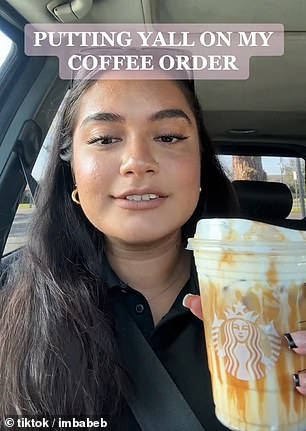The Starbucks effect! As coffee chain’s annual revenue shoots up to $35.9 BILLION, experts explain how its seasonal drinks enticed a cult following from the TikTok generation
Whether it’s a Frappuccino in the summer, a Pumpkin Spice Latte in the fall, or a Peppermint Mocha in a red cup during the holidays, Starbucks coffee has quickly become part of our cultural landscape.
But as other major chains begin to see consumers cut back as the cost of living rises, the Seattle-based coffee shop seems only to be going from strength to strength.
Last week, the company — which has about 17,000 stores in North America — reported earnings and revenue that were well above analysts’ expectations.
Revenue for the fourth fiscal quarter – between July and September – rose 11 percent to $9.4 billion. And for the full fiscal year ending Oct. 1, revenue rose 11.6 percent to $35.9 billion.
Since 2020, the coffee giant’s annual revenue has been on a steady upward trajectory. Over the past four financial years, it has grown by more than 50 percent – from $23.5 billion. But what about the Starbucks Effect that allows the company, founded in 1971, to outpace its newer rivals and maintain such a loyal cult following?
Since 2020, the coffee giant’s annual revenue has been on a steady upward trajectory
According to the experts, this has to do with the seasonality and adapted nature of the offer, the rewards program, new initiatives and – increasingly – the presence on social media.
Last quarter, the company’s fall menu — and its legions of loyal followers — helped it break records.
Chief Executive Officer Laxman Narasimhan said Starbucks saw record-breaking weekly sales after launching this year’s Pumpkin Spice Latte and Pumpkin Cream Cold Brew in late August.
The original Pumpkin Spice Latte, which has become an internet sensation, celebrates its 20th anniversary this year.
But the company has by no means been immune to controversy in its 52 years of existence.
Executives’ efforts to organize unions argue that they work better when they deal directly with their employees. And it has faced widespread accusations of unlawful anti-union practices, including firing workers and closing stores for organizing activities — which it denies.
Former Starbucks CEO Howard Schultz, who resigned in March this year, insisted at a Senate hearing the same month that his company had not violated labor laws.
And in September, a consumer protection lawsuit was filed against the company because its popular fruit refreshment drinks did not contain the advertised fruit.
The plaintiffs alleged in the lawsuit that they paid a higher price for the drinks, which they would not have purchased if they had known they were missing some of the mentioned fruits. Starbucks has called the allegations “inaccurate and baseless.”
But despite these ongoing controversies, customers don’t seem to be deterred from heading to their local branch for a coffee fix.

The brand currently has more than 2.1 million followers on TikTok, where it posts consumer- and influencer-led content, as well as videos featuring celebrities like Ed Sheeran
It’s in contrast to other chains and some big box stores that have noticed how consumers are cutting back on spending or starting to cut back on essentials. Starbucks has yet to see a similar decline in demand for its higher-priced drinks.
Chief Marketing Officer Brady Brewer said in a meeting with investors that young consumers in particular still choose to spend money on specialty coffee, for example.
According to retail analyst Neil Saunders of GlobalData, this is the main driver behind the chain’s success.
“Some of the growth in the US is due to increased demand for higher-priced, customized options, especially in cold drinks,” he told DailyMail.com.

According to Clair Jones, founder of marketing agency LoudBird, much of the company’s success is down to its online presence – and the way it targets a female audience.
“Having the flexibility to offer this is a critical ingredient to Starbucks’ success, as it both increases sales and enables a truly customized experience that improves satisfaction.”
He continued: “Starbucks is a very resilient brand, even during a more challenging economic period.
‘This is largely because coffee consumption is ritual; it’s a habit that’s hard to break and a small treat that many don’t want to give up, even as finances tighten.”
CMO Brewer added that in the event the economy takes a turn for the worse, the company will be more confident than during previous recessions because it has a rewards program that allows it to communicate directly with consumers.
Starbucks currently has 75 million active rewards members and hopes to double that in the next five years.
According to Clair Jones, founder of marketing agency LoudBird, much of the company’s success is due to its online presence.
The brand currently has more than 2.1 million followers on TikTok, where it posts consumer- and influencer-led content, as well as videos featuring celebrities like Ed Sheeran and Oprah.
“They’re embracing new platforms that I think are important – and they’re doing it well. There are a lot of bigger corporate brands like that trying TikTok, but they’re just doing a really poor job,” Clair told DailyMail.com.


Clair said the company’s presence on social media is a big driver of its popularity, especially among the younger generation
‘I think the key to that is having a really organic feel, rather than coming across as a really polished advert. It feels more like a fan posting a video about the brand, and not necessarily the brand creating the content.
“Another thing I think they’re doing a great job of is focusing on seasonality, but also on the powerhouse of the economy, which is women and mothers.”
For many fans of the brand, Clair says it’s about the experience of going to their local Starbucks, which is partly due to their highly trained baristas.
“For example, when I go to my local Starbucks — and I go probably twice a week — they know my name and they know my kids’ names,” she said.
“Starbucks has the atmosphere of a local coffee shop with the predictability and consistency of a national chain. They do a really good job of hiring people who embody that.”
Clair added that she has noticed a growing online trend, especially on TikTok, about how to “hack” the loyalty program or Starbucks app to get money from drinks.
Whether or not it is an undercover marketing campaign, people are always involved in how they can save money.
‘The younger generation in particular appreciates that they can ‘deceive the man’. I think that’s part of their consumer identity. They like to get a deal and get an exclusive deal,” she said.
In addition to an effort to grow sales in China, the company last fall announced a $450 million revamp aimed at speeding up service and boosting employee morale.
This included new work stations that reduced the time it took to make iced drinks, which now make up 75 percent of U.S. sales.
Starbucks also announced earlier this week that it will increase the hourly wages of its U.S. retail employees by 3 to 5 percent starting next year.
The chain currently pays its average store employee $17.50 per hour and with benefits about $27 per hour, according to a statement it released Monday.
(item name = module id = 119913161 style = undefined /)
It said that from January 1, eligible retail workers would see a 3 percent pay increase. Those with between two and five years of service would see a 4 percent increase, while those with more than five years of experience would see an increase of at least 5 percent.
The average hourly wage would therefore increase by about 50 cents to $18 per hour.
This change could help the company tamper with the unionization efforts it opposes.
“We have created a more stable environment in our stores,” CEO Narasimhan said earlier this month.
